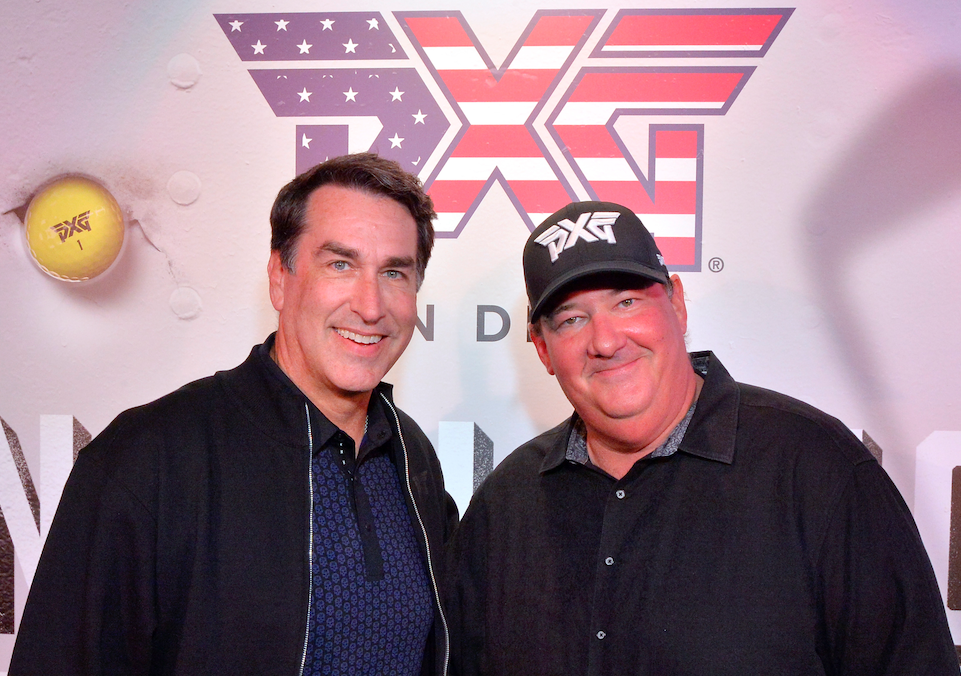Our PXG Troops’ skill index spans from beginner to Tour level player. No matter your level, PXG equipment is designed to enhance not only your performance, but your enjoyment on the course too. While our game changing technology and custom fitted equipment plays a huge part in lowering those scores, if you’re a golf nerd like us, you’ll also enjoy geeking out on technique and swing mechanics to help tune up your game.
We asked PXG Ambassador and golf instructor, Alex Riggs to take a look at some of our PXG Troops’ swings to provide some tips and techniques to help elevate your game. First on the tee, PXG Ambassador Blair Wheeler. Alex and Blair walk us through what they’ve been working on together at the range!
Want to see more videos like this one? Be sure to check out our latest videos for more golf swing tips, expert reviews, product launches, and so much more!
PLAY BETTER GOLF WITH A PXG FITTING EXPERIENCE!
If you want to be like Blair and suck less at golf, it all starts with a golf club fitting. Learn what to expect during your first fitting experience with our guide. With PXG getting fit is easy. Get fitted over the phone at 1.844.PLAY.PXG, or at a PXG Fitting location near you!
Video Transcript
Blair Wheeler:
Hey guys, I’m Blair Wheeler. Just like y’all, I want to suck less at golf. So I’ve been working with my coach, Alex Riggs, PXG ambassador, to do a couple things. The first one is not roll my wrist as much and create this really, really open club face back here. And really try to close that at the top to stop me from slicing the ball. Now, Alex, I’ve done that and I’ve hit a hook. What do I do?
Alex Riggs:
What’s going on Blair? All right, pal. So great to see an update come through from you and see the progress. You’ve done a super job of getting better control of that club face. So if we think back to how it used to look, the club face was on the left side of the club shaft as it worked up. Now we can see very clearly that the club face is staying on the right side of the shaft in more of a square position. So, that’s great.
Alex Riggs:
Now because the phase used to be so open, you naturally learned a strategy to get it to square up. And the strategy that you used was a strategy involving some casting. Some throwing of the angles from the top, which would’ve created this scoopier-style impact. We see the hands are behind the golf ball through impact. I know this is a weaker position, but this was a position that you had to get into to square the face up. So you’ll see from the down the line, we’ll see that we’ve got a lot of tendency to scoop the golf ball and create more of that flippy-style release. Obviously not ideal, but that was what was needed.
Alex Riggs:
So now what we need to learn is what we can do with this square face to work into a much stronger down swing. Now to get better at the down swing, we’ve got to get better first at how we load the arms up in the back swing. So what I want you to understand is the importance of getting, once the left arm is parallel to the ground as it is here, getting the golf club to vertical. Getting the golf club to 90 degrees. This is very important because this is a great checkpoint for us to know that we’ve created the necessary hinge in through the right wrist and elbow. We’ve created a loading leverage in the arms.
Alex Riggs:
So, where this happens. We start the golf swing, turning away with those big muscles. You’re doing a great job of that. Once the hands pass the right leg, it’s now time to get things loaded up. So beyond this point right here, and up until we get to left arm parallel, we need to load the club in arms. So what that’s going to feel like to you is, as you’re moving in through that zone, you’re going to continue to be pushing away with that left arm. But the right wrist and elbow are going to feel to you like they’re putting a pulling feeling back into the club shaft. And that’s what’s going to make the club travel up closer to that right shoulder. That’s the leverage that we’re trying to create. So as you can create that leverage, what we will inevitably see is that your back swing stops shorter. You don’t need your arms to go any further than this point right here, if we take a look at where that left arm is. But you will swing a lot further back because you haven’t loaded anything up. And that influences the whole chain reaction coming down.
Alex Riggs:
So what I want to see from you, my friend, I need to see your version of a swing that is very short in length, no longer than left arm parallel. That’s our checkpoint, so that’s what I want to see. And, at this point, I need to see that the golf club is at least at vertical. It’ll probably feel to you like it’s somewhere over here. So let’s make a slow back swing feeling, where in through this mid swing you feel the pushing away of the left, and the pulling back towards you through the right wrist and elbow to get the golf club in that leveraged position.
Alex Riggs:
Again, once the left arm is parallel to the ground, club shaft’s at 90 degrees, all you need to do is rotate through and let everything extend. So, short back swing. Load it up. That’s what I’d like to see. So if you’ve got any questions on that hit me up, and I’ll make sure it is as clear as can be, and that you will be off and running in practice. Chat soon, pal.


